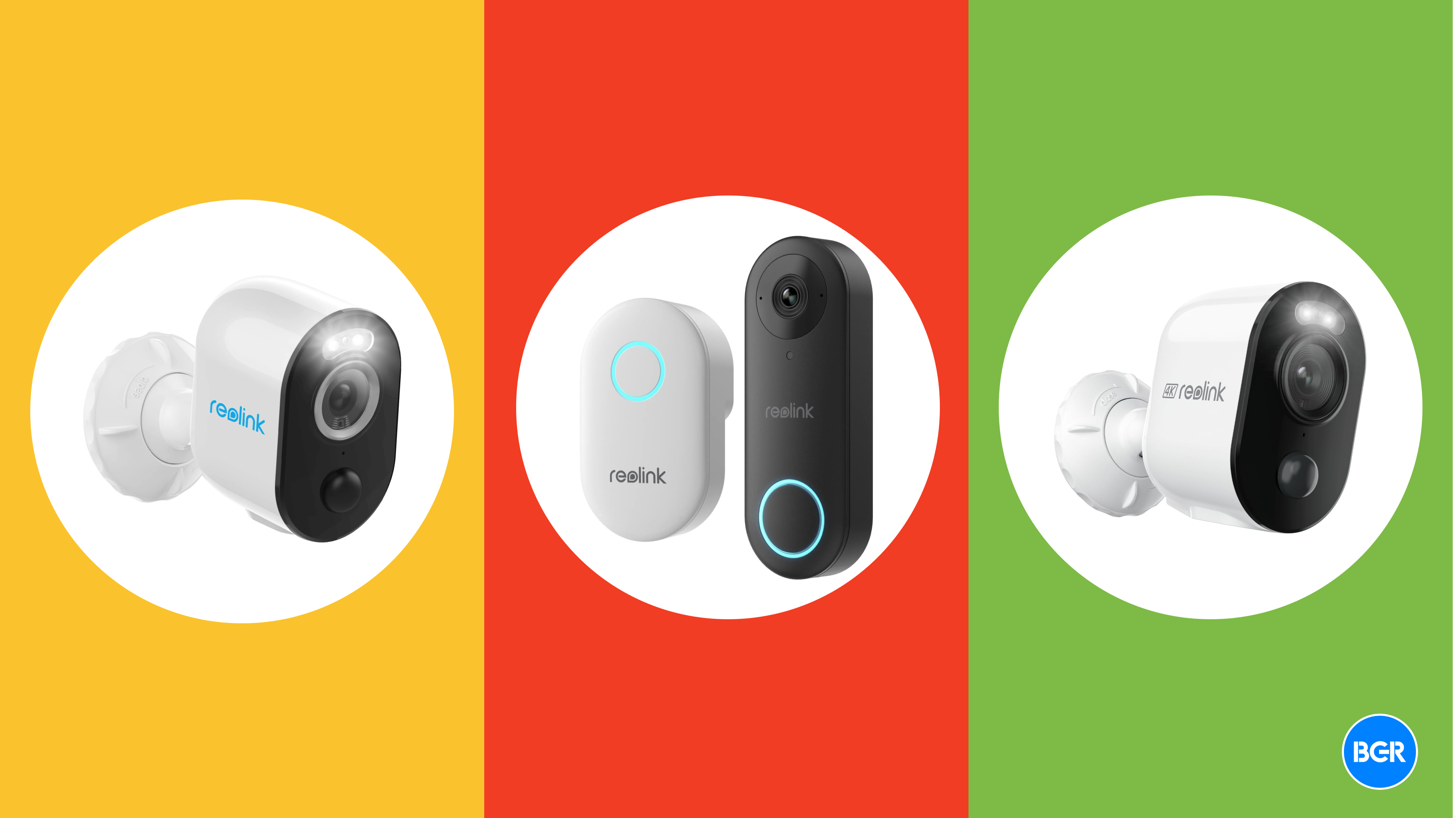Ever since late 2022, my main home security camera setup has been a Reolink NVR system. I’m very happy with it. I have cameras set up all around the perimeter of my house so I can see every corner of my property. Most are stationary, and then for areas that are trickier, I upgraded to what Reolink calls PTZ cameras. They can pan, tilt, and zoom instead of being fixed on one spot. Everything is connected to the Reolink NVR, and I have 12TB of storage so I don’t have to worry about losing anything important.
For the inside of my home, I’ve been a longtime Arlo user. I don’t need constant surveillance inside my house, so I opted for a less permanent solution. Since Arlo cams are wire-free and run on battery power, I didn’t have to worry about running wires or having charging cables hanging all over the place. Last month, however, I decided to ditch Arlo for several reasons and I switched all of my inside cameras over to Reolink models.




I’ve been an Arlo user for nearly a decade at this point, since it was a Netgear brand. I have definitely experienced ups and downs over the years.
The early days were a bit rough, and I have had countless problems with the Arlo app. It was awful for a while, though most of the wrinkles seem to have been ironed out at this point.
As for the cameras themselves, it’s been a mixed bag. Battery life is decent on most of my cameras since they’re rarely used, but a few of them drain quickly for no reason. Video quality is generally pretty good, but false alerts have always been a huge pain. That’s one of the main reasons why I originally decided to ditch all of my outdoor Arlo cameras and switch to a POE system.
My biggest recent complaint about Arlo is mostly a matter of principle. I had a video doorbell and a bunch of indoor cameras that I rarely use, and yet a policy change a few years ago now forces me to pay for an annual subscription in order to access key features. Fine.
Then, last month, I got a charge for my subscription that was higher than normal. I contacted support only to learn that the price of my subscription had increased with no warning. Not only that, but I was told the price had just increased AGAIN, so my next renewal would cost even more.
I decided I had enough, and it didn’t take me long to realize that there was an obvious brand to turn to for replacement cameras.




Since I was so happy with my Reolink NVR, I decided to go with Reolink battery cameras as well. I made the switch now, and I couldn’t be happier.
Reolink does have a cloud storage plan available for a fee, which is fine. Unlike Arlo, however, Reolink doesn’t force you to pay. Instead, you can use the company’s battery cameras for free to stream live video whenever you want. And if you want to use it to record, all you need to do is pop in a microSD card.
So far, I’ve purchased three different types of Reolink battery cameras. Most of them are the Reolink Argus 3 Pro model, which records and streams 2K video. I also have one Reolink Argus 3 Ultra model that supports 4K, and the resolution is great.
Then I picked up a Reolink E1, which is a wired camera as opposed to a battery-powered model. I have one spot where the power cable will be completely out of sight, so it’s nice to have a camera there that can pan and tilt to see almost 360 degrees.
I have a schedule set so they record any motion events at night while we’re sleeping. Most of the time, however, they’re in standby mode. I find that the battery of each camera drains less than 1% per day with this setup, so I fully expect to get more than three months of battery life in between charges. That’s about 33% better than most of my Arlo cameras.
The only downsides I’ve found so far are minimal.
It would be nice to be able to be able to record on my Reolink NVR instead of microSD cards, sure. But that would obviously destroy the battery life. The only reason I actually care about the differentiation between POE cameras and battery cameras is the fact that the app won’t let you group them together.
The only other thing is limited smart home integration. There are ways to integrate your Reolink system with smart home platforms, but they’re all complicated and really only good for tinkerers as opposed to regular users. Since Arlo is cloud-based, it was easy to connect my Arlo account and cameras with SmartThings, which is the smart home platform I use.

If your setup and usage are similar to mine, I highly recommend that you check out Reolink battery cameras. I’ve tested several other brands over the years, but this Reolink setup offers the best overall experience for me
Plus, Reolink’s battery cameras are so much cheaper than comparable Reolink models. I still can’t believe how much Arlo charges for some of its cameras.

